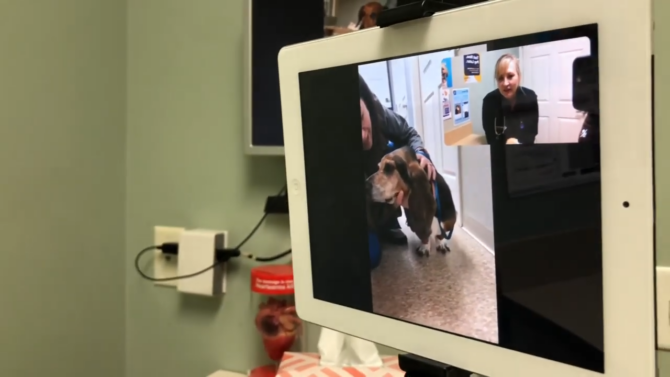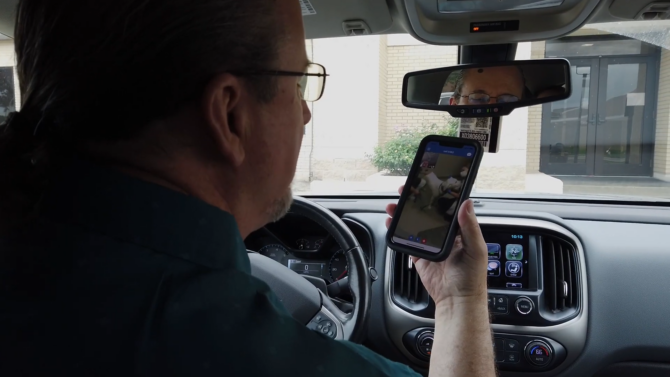This telemedicine has revolutionized how we address the health needs of our beloved pets. It gives a convenient, efficient alternative to standard health center visits.
For pet proprietors, this means accessing expert advice without the need to tour, reducing strain for both pets and their human partners. I will proportion extra details about this subject matter in the following blog.
Telemedicine in Veterinary Care

Telemedicine in veterinary care is an innovative technique that utilizes digital generation to provide healthcare services remotely.
This approach has become famous, providing consultations via video calls, phone, or text. It’s particularly useful for routine follow-ups, minor concerns, or initial consultations.
This technology lets veterinarians diagnose, advise, and prescribe remedies from a distance, making healthcare more reachable and handy for pet owners. All you need is a stable connection at home. If you are facing difficulties, be sure to check out this page.
The Benefits of Online Pet Health Diagnostics
Online pet health diagnostics offer several benefits. Above all else, they provide convenience and versatility, allowing pet owners to seek advice without the hassle of a body scan.
It’s also less traumatic for pets because they stay in their cozy environment. Telemedicine can be cost-effective and reduces the need for unnecessary visits to medical facilities.
Additionally, it facilitates faster responses, which is potentially key to faster diagnosis and treatment.
How Telemedicine Works for Pet Owners and Vets?

For puppy owners, telemedicine involves scheduling an appointment online and then consulting with a veterinarian via video call, smartphone, or messaging.
Veterinarians then again use specialized software to handle appointments, review clinical history, and provide consultations. This gadget allows you to share videos or photos of the puppy, which helps in accurate exams.
Prescriptions can be submitted electronically and follow-up appointments are seamlessly scheduled.
Common Conditions Addressed through Telemedicine
Telemedicine is ideal for dealing with unusual situations such as minor injuries, skin irritations, allergic reactions and dietary issues. It is additionally useful for behavioral recommendations and general fitness queries.
However, it is important to note that telemedicine is not suitable for emergency conditions or conditions requiring physical examination, laboratory tests or surgery.
Choosing the Right Telemedicine Service for Your Pet

Choosing the right telemedicine operator involves several concerns. Make sure the provider is licensed and the vets are licensed. Look for structures that provide features like smooth appointment scheduling, stable billing methods, and top-notch customer support.
Reviews and testimonials can offer insight into first-class care. Additionally, see if they can be integrated with your regular vet’s facts for uninterrupted health care.
Trends and Predictions
The future of veterinary care looks promising with telemedicine at its core. We can expect advances in AI diagnostics, wider adoption of remote monitoring technology and more personalized care plans.
Telemedicine can also expand to include digital reality for academic functions and more appropriate interaction between veterinarians and puppy owners. In addition, collaboration between telemedicine systems and conventional veterinary clinics is likely to increase.
Mobile fitness tracker apps give pet owners the ability to sing their pets’ vital signs and interest levels in real-time. Wearable pet gadgets that include smart collars provide 24/7 health monitoring, alerting owners and vets to health issues with the ability before they become critical.
This technology is now not the most adept, making far-reaching veterinary care extremely powerful, but also substantially increasing the ease and efficiency of tracking and maintaining the condition of puppies.
Challenges and Concerns in Veterinary Telemedicine

Although useful in veterinary care, telemedicine faces challenges such as regulatory issues as veterinary laws vary from region to region. There are also concerns about the limitations of diagnosis without a physical examination.
Ensuring privacy and record protection is another key element. Addressing these challenges requires regulators to update laws to address telemedicine, educate puppy owners about its pitfalls, and enforce strong statistical safeguards.
Telemedicine for Emergency Situations
In an emergency setting, it is essential to understand the function of telemedicine. Although it cannot update in-person care in critical cases, telemedicine can be a valuable tool for initial assessment and counseling.
Guidelines for how to effectively communicate with veterinarians at a particular stage of a disaster and guidelines for vital facts for a brief assessment may also be included.
FAQs

Can Vets Misdiagnose?
Yes, veterinarians, like all clinical professionals, can occasionally misdiagnose a pet’s situation. Despite their considerable schooling and entertainment, the complexity of animal fitness and the limitations of diagnostic tools can lead to inaccuracies from time to time.
Factors such as non-unique symptoms, unusual illnesses, or communication barriers between puppy and vet can contribute to misdiagnoses. Pet owners must seek a 2D opinion if they are concerned about their pup’s diagnosis.
Is There a Symptom Check for Cats?
There are several online symptom checkers for cats that are designed to help pet owners recognize health problems. These facilities typically ask a sequence of questions about the cat’s signs, symptoms, and behavior to provide a preliminary assessment.
However, it is important to remember that these checks are not a substitute for professional veterinary advice. It should most simply be used as a guide and any problems should be followed up with a vet visit.
How Do Dogs Behave When They Are Sick?
When dogs are sick, they often show changes in behavior or physical condition. Common signs and symptoms include lethargy, loss of appetite, vomiting, diarrhea, coughing, sneezing, limping, or changes in behavior when urinating or defecating.
Dogs may also show adjustments in their behavior along with improved irritability or a desire to be left to themselves. It is important to monitor these changes and seek veterinary advice if symptoms persist or worsen.
Additionally, pet owners should be mindful of outdoor activities, as some health issues, such as mango worm infestations, can arise from contact with infested soil or vegetation.
How Much Does a Dog Scan Cost?
The value of a dog scan along with an X-ray, ultrasound, CT scan, or MRI varies greatly depending on factors such as the type of test, the size of the dog, the geographic location, and the facility.
On average, an X-ray can cost anywhere from $75 to $250, an ultrasound around $300 to $600, a CT scan $500 to $1,200, and an MRI typically ranges from $1,000 to $2,500. It is satisfactory to discuss exact prices with the veterinary hospital and to have diagnostic alternatives.
Last Words
Combining telemedicine with veterinary care represents a giant leap forward in how we handle the health of our pets. This progressive method, which is not the most effective, provides convenience and efficiency, but it also opens new avenues for preventive health care and continuous monitoring.
Generational improvements, especially with AI diagnostics and wearable health monitors, make telemedicine an increasingly reliable and effective tool. While not an alternative to in-house veterinary care, particularly in emergency settings, it complements traditional strategies by providing a practical platform for initial consultations, repeat examinations and follow-up appointments.



